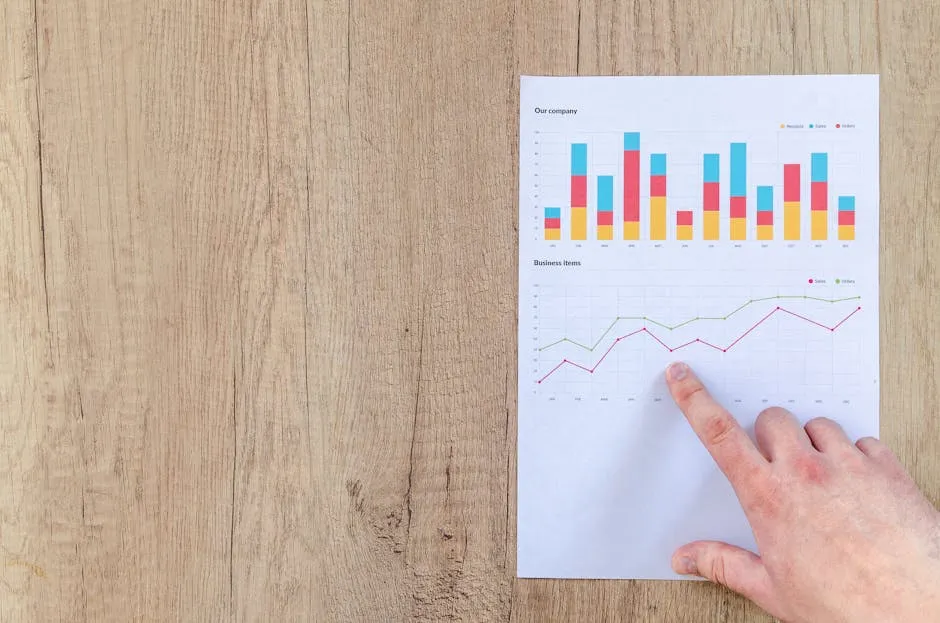Introduction
In a world overflowing with information, understanding the difference between qualitative and quantitative data is crucial. While qualitative data dives into the depths of human experience, quantitative data stands tall in the realm of numbers and statistics. It’s like comparing a rich, emotional novel to a precise, data-driven textbook.
Quantitative research is all about gathering numerical data. This data is expressible in terms of quantity, making it measurable and analyzable. Think of it as a detailed scorecard for your favorite sports team. You can track points, assists, and rebounds, all providing a clear picture of performance.
Why does this matter? Well, quantitative data is essential across various sectors. From education to healthcare, it provides a solid foundation for decision-making. Businesses rely on quantitative research to drive strategies, while scientists use it to uncover truths about the universe.
In this article, we unravel the concept of “quantitative,” exploring its definition, significance, methodologies, and applications across various fields. Whether you’re a student, a business professional, or simply a curious mind, this guide will equip you with the knowledge to navigate the numerical landscape with confidence and clarity.
So, buckle up! We’re about to embark on a numbers adventure, exploring how data can tell stories that are just as captivating as any novel. You’ll soon find that quantitative research isn’t just about numbers; it’s about making sense of the world around us. Prepare to be amazed at how statistics can illuminate trends and patterns in ways that are both insightful and practical!

Summary of Key Points
This article examines the multifaceted nature of quantitative data, which is expressible in terms of quantity and involves measurement. Here’s a sneak peek into what you can expect:
- Definition: Discover the roots of the term “quantitative,” its pronunciation, and how it contrasts with qualitative data.
- Importance: Learn why quantitative data is essential across various sectors, from education to healthcare, providing a solid foundation for decision-making.
- Types of Quantitative Research: Explore the different methodologies, including descriptive, correlational, and experimental research designs, each serving unique purposes in data collection and analysis.
- Data Collection Methods: Understand various approaches such as surveys, polls, and systematic observations that gather numerical data for analysis.
- Statistical Analysis: Gain insights into how statistical tools and software like SPSS Statistics Software and R Programming for Data Science Book are used to analyze quantitative data, helping researchers make sense of their findings.
- Applications: Examine real-world applications of quantitative research, including market analysis, healthcare studies, and educational assessments.
- Limitations: Recognize the limitations of quantitative research, including its inability to capture the nuances of human emotions and experiences.
By the end of this article, you’ll have a comprehensive understanding of quantitative data, its significance, and its practical applications, sparking curiosity to explore further. From the classroom to the boardroom, knowing how to interpret and utilize quantitative data can open doors you never knew existed.

What is Quantitative?
Definition and Pronunciation
Quantitative refers to anything that can be expressed in numerical terms. It’s about measuring quantities and amounts. When researchers gather data that is quantifiable, they can perform analyses to derive insights based on statistics. This approach is essential in fields like science, economics, and social research.
Phonetic pronunciation for “quantitative” is /ˈkwɒn.tɪ.tə.tɪv/ in American English and /ˈkwɒn.tɪ.teɪ.tɪv/ in British English. So, next time you’re discussing your latest numbers, you can impress your friends with the correct pronunciation.

Historical Context
The term “quantitative” has its roots in Medieval Latin, originating from “quantitativus,” which comes from “quantitas,” meaning quantity. The first known use of the term dates back to 1581. Initially, it was used to describe concepts related to measurement and amounts.
Over time, the meaning of “quantitative” has evolved. Today, it encompasses a broader range of applications. It’s not just about hard numbers; it also involves methodologies that test hypotheses and explore relationships between variables. This evolution reflects the growing importance of data-driven decision-making in various fields, from education to healthcare.
Types of Quantitative Research
Overview of Quantitative Research
Quantitative research is all about numbers! It focuses on quantifying data collection and analysis. This approach is crucial in many fields, including market research, psychology, and healthcare. The aim? To develop mathematical models and theories that explain phenomena. Researchers use measurable data to identify trends and relationships, turning abstract concepts into tangible numbers.

Research Designs
Descriptive Research
Descriptive research provides a snapshot of a situation. It captures details about characteristics or behaviors without manipulating any variables. For example, a survey measuring the average age of students in a classroom is descriptive research. It gives insight into a specific group but doesn’t attempt to establish cause-and-effect relationships.

Correlational Research
Correlational research examines the relationship between two or more variables. Imagine studying whether higher study hours correlate with better exam scores. This type of research can reveal patterns, like whether increased exercise leads to improved mood. However, it’s important to note that correlation doesn’t imply causation—just because two variables are related doesn’t mean one causes the other.

Experimental Research
Experimental research is the heavyweight champion of hypothesis testing! It involves manipulating one variable to see how it affects another. For instance, a researcher might want to test if a new teaching method improves student performance. They would randomly assign students to two groups: one using the new method and another using the traditional approach. By analyzing the results, researchers can determine the effectiveness of the intervention. For more information, check out these tips on ensuring parametric statistics assumptions are met in experimental research.

Data Collection Methods
Surveys
Surveys are the bread and butter of quantitative data collection. They provide a structured way to gather information from a large group of people. Typically, surveys use closed-ended questions, allowing respondents to select from predefined options. This format makes it easy to analyze responses statistically. For a comprehensive look at statistical surveys, refer to this statistical surveys guide. And speaking of guides, if you’re looking to dive deeper into the world of data analysis, consider picking up The Data Warehouse Toolkit Book for essential insights!

Interviews and Polls
Structured interviews and polls are also valuable in quantitative research. These methods often involve asking participants a set of predetermined questions. Polls can quickly gauge public opinion on various issues, while interviews can dive deeper into specific topics, yielding rich data that can be quantified.

Secondary Data Sources
Secondary data sources are a treasure trove for quantitative analysis. Researchers can leverage previously collected data from studies, surveys, or reports. This approach saves time and resources. By analyzing existing data, researchers can uncover trends and patterns, adding depth to their findings without starting from scratch.
In summary, understanding quantitative research and its various methods is essential for anyone looking to make sense of data. Whether through surveys, experiments, or secondary sources, quantitative research provides the tools to analyze and interpret the world numerically. If you’re eager to enhance your skills, don’t miss out on Statistics for Dummies Book to get started!

Statistical Analysis
Importance of Statistics in Quantitative Research
Statistics are the magic beans of quantitative research. They transform raw data into meaningful insights. Imagine you have a mountain of numbers. Without statistics, it’s just chaos! Statistics help you create order from disorder. They quantify relationships, trends, and patterns, making sense of the seemingly random.
For businesses, this means informed decisions. In healthcare, it aids in understanding patient outcomes. In education, it evaluates teaching effectiveness. Statistics ensure that conclusions drawn from data are reliable and valid. They empower researchers to confidently communicate their findings, ultimately impacting real-world decisions.

Types of Statistical Analysis
Descriptive Statistics
Descriptive statistics summarize and simplify large data sets. They provide a snapshot of the data, presenting essential information through measures such as mean, median, mode, and standard deviation. Think of it as the highlight reel of a game—it showcases the key plays without the clutter.
Descriptive stats help researchers understand trends at a glance. For example, if you surveyed customer satisfaction, descriptive statistics reveal the average satisfaction score. They also help identify outliers and distributions in the data, guiding further analysis. If you’re looking for a comprehensive guide, consider The Art of Statistics Book to deepen your understanding!

Inferential Statistics
Inferential statistics take it a step further by allowing researchers to make predictions or generalizations about a population based on a sample. This type of analysis is all about making informed guesses—like predicting the outcome of a game based on team statistics.
Using inferential statistics, researchers can test hypotheses and determine relationships between variables. For instance, a study might examine whether increased study hours relate to improved test scores. By analyzing a sample, researchers can infer conclusions applicable to the larger population. However, be aware of the problem with inferential statistics that may arise during such analyses.

Tools for Data Analysis
When it comes to analyzing quantitative data, several software tools reign supreme. SPSS (Statistical Package for the Social Sciences) is a popular choice among social scientists. It offers a user-friendly interface for performing complex statistical analyses without needing a PhD in statistics.
R is another powerful tool, favored by data scientists. It’s open-source and incredibly versatile, allowing for advanced statistical modeling and graphical representations. Both SPSS and R provide researchers with the tools to analyze data effectively, ensuring that statistical insights are accessible and actionable. If you’re diving into R, consider Understanding and Applying Basic Statistical Methods Using R Book for a solid foundation!

Advantages and Disadvantages of Quantitative Research
Advantages
Quantitative research packs a punch with its strengths. First, replicability is a major advantage. Studies can be repeated with the same methods, allowing for validation of results. This consistency builds trust in the findings.
Next, there’s generalizability. Because quantitative research often uses larger samples, findings can be applied to broader populations. This feature is invaluable in fields like healthcare and marketing, where understanding trends across demographics is essential.
Another perk? Precision! With numerical data, researchers can measure and compare variables clearly. This clarity makes it easier to identify patterns and relationships, leading to informed decision-making.

Disadvantages
However, quantitative research isn’t without its challenges. One significant limitation is its inability to capture qualitative nuances. Numbers alone can’t tell the full story. For instance, a survey may reveal that 80% of customers are satisfied, but it won’t explain why some are unhappy.
Additionally, the rigid structure of quantitative research may overlook important variables. If a study only focuses on specific factors, it might miss out on other relevant influences that could provide a more holistic understanding of the issue.
Finally, quantitative research can sometimes feel impersonal. The human experience is complex, and relying solely on numerical data may miss the emotional and contextual elements that qualitative research can capture. Balancing both methods can provide a richer understanding of research questions.
Applications of Quantitative Research
In Business
Businesses love numbers! Quantitative research helps them understand market dynamics and customer satisfaction. Companies conduct surveys and analyze sales data to unveil trends. For instance, they might find that 70% of customers prefer online shopping over in-store visits. This information drives strategic decisions, like enhancing digital platforms or targeting specific demographics.
Quantitative methods also measure customer satisfaction. Businesses often use Net Promoter Scores (NPS) and customer feedback forms. By crunching these numbers, they can identify areas for improvement. A sudden drop in satisfaction ratings? Time to investigate! This data-driven approach ensures companies stay in tune with customer needs. And if you’re keen on learning more about business analytics, check out The Complete Guide to Business Analytics Book!

In Healthcare
In healthcare, quantitative research plays a vital role in clinical trials and health outcomes assessment. Researchers collect data on patient responses to treatments. For example, a clinical trial for a new drug might involve hundreds of participants. By analyzing recovery rates, side effects, and overall health improvements, researchers can determine the drug’s effectiveness. To learn more about biases in this field, see overcoming biases in inferential statistics for healthcare studies.
Quantitative methods also help assess public health trends. By tracking statistics like infection rates or vaccination coverage, health officials can identify outbreaks and allocate resources efficiently. They can spot patterns, such as higher infection rates in certain demographics, enabling targeted interventions that save lives.

In Education
Education systems harness quantitative research for assessments and standardized testing. Schools use standardized tests to evaluate student performance. By analyzing test scores, educators can measure learning outcomes across various subjects. This data reveals trends, such as which teaching methods yield the best results.
Moreover, quantitative research helps identify achievement gaps among different student groups. Are certain demographics lagging behind? Schools can adjust curricula, allocate resources, and provide targeted support to ensure all students thrive. With the help of numbers, education becomes a more equitable landscape. And if you’re interested in diving deeper, consider Quantitative Research in Education Book for insights on effective educational practices!

Conclusion
As we navigate the vast sea of data, distinguishing between quantitative and qualitative research becomes crucial. Quantitative data serves as a sturdy backbone for decision-making across various fields. It allows for statistical analysis that yields actionable insights. While it has its limitations, the sheer power of numbers is undeniable.
Understanding quantitative research equips individuals and organizations with tools to analyze trends and measure outcomes. Whether you’re conducting a study or interpreting research findings, embracing the quantitative approach enhances analytical capabilities. In a data-driven world, mastering quantitative research isn’t just beneficial; it’s essential. So, whether you’re in business, healthcare, or education, harnessing the power of numbers can lead to informed decisions and impactful outcomes. Embrace the quantitative path to unlock new opportunities!
FAQs
What is the difference between quantitative and qualitative research?
Quantitative research focuses on numerical data. It emphasizes measurement and statistical analysis. Qualitative research, on the other hand, digs into feelings, thoughts, and experiences. Think of quantitative as asking, ‘How many?’ while qualitative asks, ‘Why?’ Quantitative provides hard numbers, while qualitative offers rich, descriptive insights. They complement each other, like peanut butter and jelly!
When should I use quantitative research?
Quantitative research shines in scenarios requiring measurable results. Use it when you need to analyze trends, test hypotheses, or gather statistical evidence. If you’re interested in customer satisfaction scores or the impact of a new teaching method, quantitative research is your best friend. It’s particularly effective in studies involving large groups or where you want to generalize findings across populations.
What are some common tools for analyzing quantitative data?
Several software tools facilitate quantitative data analysis. SPSS (Statistical Package for the Social Sciences) is popular among researchers for its user-friendly interface. R is another favorite, known for its flexibility and advanced statistical capabilities. Excel can also crunch numbers, although it’s more basic. Other tools like SAS and Stata are widely used in academic and professional settings, ensuring your data is in good hands!
Can quantitative research capture complex human experiences?
While quantitative research excels at measuring trends, it struggles with the nuances of human experience. It provides numbers but may miss the emotions behind those numbers. For instance, a survey might reveal that 70% of people are satisfied, but it won’t explain why some feel this way. To capture the essence of human experiences, qualitative methods are essential. Combining both approaches often yields a richer understanding.
How can I get started with quantitative research?
Ready to dive into quantitative research? Start by defining your research question. What do you want to measure? Next, create a hypothesis—your educated guess about the expected outcome. Then, choose a method for data collection, such as surveys or experiments. After gathering data, analyze it using statistical tools. Finally, present your findings clearly, making sure to highlight the significance of your results. Happy researching!
Please let us know what you think about our content by leaving a comment down below!
Thank you for reading till here 🙂
All images from Pexels




